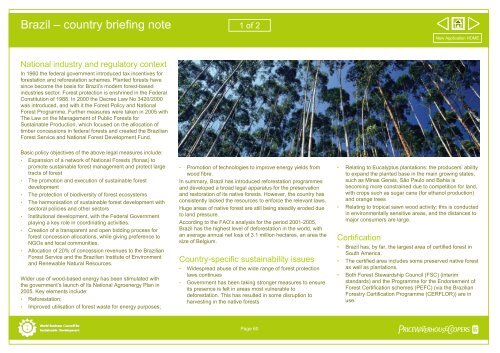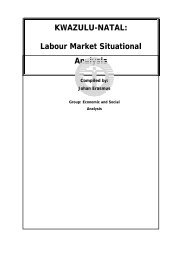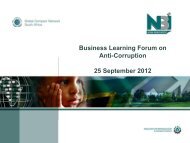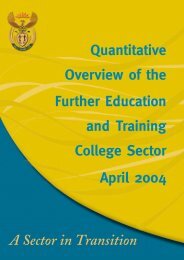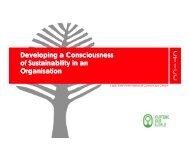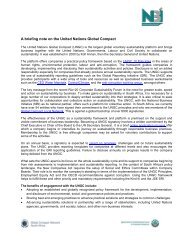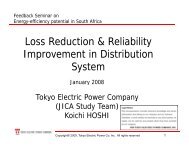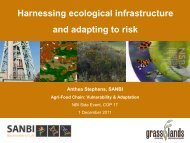Sustainable Forest Finance Toolkit - PwC
Sustainable Forest Finance Toolkit - PwC
Sustainable Forest Finance Toolkit - PwC
- No tags were found...
You also want an ePaper? Increase the reach of your titles
YUMPU automatically turns print PDFs into web optimized ePapers that Google loves.
Brazil – country briefing note 1 of 2New Application HOMENational industry and regulatory contextIn 1960 the federal government introduced tax incentives forforestation and reforestation schemes. Planted forests havesince become the basis for Brazil’s modern forest-basedindustries sector. <strong>Forest</strong> protection is enshrined in the FederalConstitution of 1988. In 2000 the Decree Law No 3420/2000was introduced, and with it the <strong>Forest</strong> Policy and National<strong>Forest</strong> Programme. Further measures were taken in 2005 withThe Law on the Management of Public <strong>Forest</strong>s for<strong>Sustainable</strong> Production, which focused on the allocation oftimber concessions in federal forests and created the Brazilian<strong>Forest</strong> Service and National <strong>Forest</strong> Development Fund.Basic policy objectives of the above legal measures include:• Expansion of a network of National <strong>Forest</strong>s (flonas) topromote sustainable forest management and protect largetracts of forest• The promotion and execution of sustainable forestdevelopment• The protection of biodiversity of forest ecosystems• The harmonisation of sustainable forest development withsectoral policies and other sectors• Institutional development, with the Federal Governmentplaying a key role in coordinating activities.• Creation of a transparent and open bidding process forforest concession allocations, while giving preference toNGOs and local communities.• Allocation of 20% of concession revenues to the Brazilian<strong>Forest</strong> Service and the Brazilian Institute of Environmentand Renewable Natural Resources.Wider use of wood-based energy has been stimulated withthe government’s launch of its National Agroenergy Plan in2005. Key elements include:• Reforestation;• Improved utilisation of forest waste for energy purposes;• Promotion of technologies to improve energy yields fromwood fibre.In summary, Brazil has introduced reforestation programmesand developed a broad legal apparatus for the preservationand restoration of its native forests. However, the country hasconsistently lacked the resources to enforce the relevant laws.Huge areas of native forest are still being steadily eroded dueto land pressure.According to the FAO’s analysis for the period 2001-2005,Brazil has the highest level of deforestation in the world, withan average annual net loss of 3.1 million hectares, an area thesize of Belgium.Country-specific sustainability issues• Widespread abuse of the wide range of forest protectionlaws continues• Government has been taking stronger measures to ensureits presence is felt in areas most vulnerable todeforestation. This has resulted in some disruption toharvesting in the native forests• Relating to Eucalyptus plantations: the producers’ abilityto expand the planted base in the main growing states,such as Minas Gerais, São Paulo and Bahia isbecoming more constrained due to competition for land,with crops such as sugar cane (for ethanol production)and orange trees• Relating to tropical sawn wood activity: this is conductedin environmentally sensitive areas, and the distances tomajor consumers are large.Certification• Brazil has, by far, the largest area of certified forest inSouth America.• The certified area includes some preserved native forestas well as plantations.• Both <strong>Forest</strong> Stewardship Council (FSC) (interimstandards) and the Programme for the Endorsement of<strong>Forest</strong> Certification schemes (PEFC) (via the Brazilian<strong>Forest</strong>ry Certification Programme (CERFLOR)) are inuse.Page 60pwc


